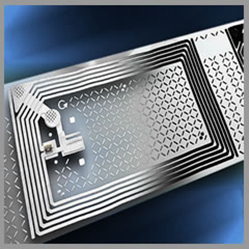Library Security System
Radio-frequency identification (RFID) is the wireless non-contact use of radio-frequency electromagnetic tields to transfer data, for the purposes of automatically identifying and tracking tags attached to objects. The tags contain electronically stored information.
RFID (Radio Frequency Identification) allows an item, for example a library book, to be tracked and communicated with by radio waves. This technology is similar in concept to a cellphone. RFID is a broad term for technologies that use radio waves to automatically identify people or objects. There are several methods of identification, but the most common is to store a serial number that identifies a person or object, and perhaps other information, on a microchip that is attached to an antenna (the chip and the antenna together are called an RFID transponder or an RFID tag). The antenna enables the chip to transmit the identification information to a reader. The reader converts the radio waves reflected back from the RFID tag into digital information that can then be passed on to computers that can make use of it.
Advantages of RFID systems
- Improved tracking of high value items
- Reduce Human errors
- Technology standards to drive down cost
- Reduce materials cost and handling
- Automated issue/return
- Automated sorting of books on return
- Inventory visibility accuracy and efficiency
- Self-charging discharging
- Reliability of System
- Streamlined Inventory Management
- Longitivity of Tag life
- Faster Circulation
- Reduction in workplace injuries
- Theft reduction
- High level of security
- Mis-shelve easy identification
- External Book Return

